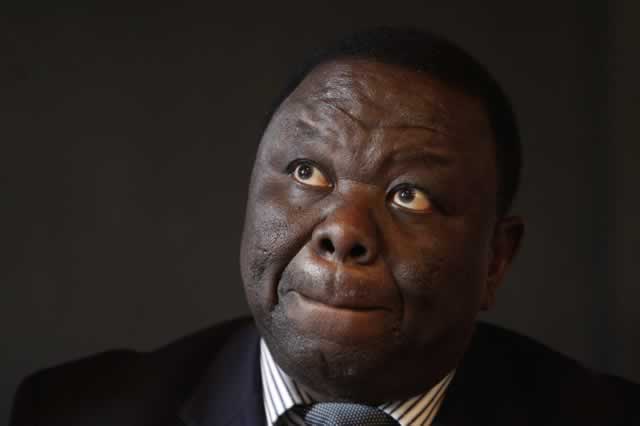Banks earmark US$720m for agric loans

Rumbidzayi Zinyuke Business Reporter
BANKS have set aside US$620 million to finance the coming agricultural season, with individual farmers and suppliers free to access the funds.
This brings to US$720 million the funds that have so far been mobilised following the US$100 million secured by CBZ Bank Limited from the African Export and Import Bank to support agriculture.
This comes as a relief to farmers who were starved of funding during the tenure of the inclusive Government as the anti-land reform MDC-T held the finance portfolio.
Analysts said the US$720 million was a sign of the banking sector’s confidence in Zanu-PF’s vision for agriculture as a key driver of economic turnaround efforts.
Speaking at the inaugural Agro-business, Food and Nutrition Security conference in Harare yesterday, Bankers Association of Zimbabwe president Mr George Guvamatanga said to close the local financing gap, the banks were also involved in mobilising resources from outside the country through lines of credit.
CBZ announced on Wednesday that it had secured an additional US$100 million medium-term line of credit from the African Export and Import Bank to support agriculture projects for the season to be extended to farmers over one year.
Mr Guvamatanga said the US$620 million had been earmarked to support fertiliser production, seed production, cattle ranching, horticulture, fruit production, poultry and growing of various crops.
“The bulk of the funds are meant for tobacco growing which accounts for 50 percent of the total resources. In light of these requirements, the Zimbabwean banks have been devising various strategies and instruments for the financing of the agricultural sector. Notable among these is the issuance of paper instruments such as the Agro Bills and AMA Bills.”
Mr Guvamatanga said 7,55 percent of the funds would benefit the cotton industry, while 4,87 percent would be for maize, 3,52 percent for horticulture and 6,94 percent for sugar cane.
Seed houses will receive 4,88 percent of the total amount.
Mr Guvamatanga said the funds would be distributed in various forms through supporting agro dealers, merchants who contract farmers and directly to farmers through loan facilities from individual banks.
He said Government should come up with a regulatory framework to ensure that distribution of the funds would consider priority areas.
“The question we need to ask is – is US$620 million enough to fund the agriculture sector and how will it be distributed?” said Mr Guvamatanga. “Currently, there is no distinction on how much will go to primary or secondary agriculture.
“So, as banks we can say we have come up with funding for agriculture, but we don’t know whether the money is going to the priority areas were funding is really needed.”
Mr Guvamatanga said banks needed to work with the Ministry of Finance and the Reserve Bank of Zimbabwe to determine which crops needed to be prioritised.
He said the success of agricultural schemes could heavily rely on the availability of an effective stop order system and legislation ensuring repayment of debt.
“The effective stop order system ensures that the farmers are able to pay as and when they get paid, hence reducing the burden on the farmer on deciding who to pay first,” he said. “The importance of this method is that it brings confidence in the lending business.”
Mr Guvamatanga said this would also take away the need for farmers to have collateral in order to access financing, which has been a major challenge for most farmers.
But farmers said the US$620 fell far short of the requirements of the sector.
Zimbabwe Farmers Union second vice president Mr Berean Mukwende said agriculture needed between US$2 billion and US$3 billion to run smoothly.
“The money will not be enough,” he said. “It will only benefit the few farmers who have always accessed it, while everyone else continues to suffer. If these funds are to be distributed through the traditional channels, then the farmers will have to face the high interest rates of up to 25 percent and between 40 and 50 percent penalty fees for delaying re-payments.
“Banks are giving farmers short term loans with high interest rates instead of medium term loans with low rates.”
Mr Mukwende said the banks were providing funding through middlemen who were in turn reaping off the farmers by charging exorbitant interest rates.
He urged Government to put in place capital reforms which would revitalise the capital markets and make sure that farmers got enough capital to support their activities.
Zimbabwe Indigenous Women Farmers Association Trust president Mrs Depinah Nkomo said funding for the sector was welcome, although there was a need to distribute the funds in a manner that ensured food security would be guaranteed.
“We as farmers grow different crops and there should be a balance in the way the funds are distributed,” she said. “If the bulk of it goes to tobacco, then the country will not have enough food. Some of that money should go towards funding other crops.”
Mrs Nkomo expressed fears that as indigenous and small scale farmers, they would not benefit from the funding because large and medium scale farmers usually got most of the funds allocated towards agriculture.
She said women farmers were eager to get the funds so that they could contribute positively towards the country’s food security.









Comments